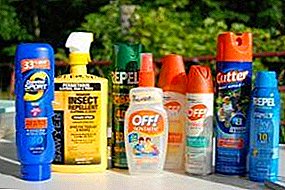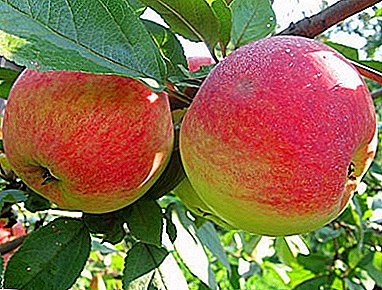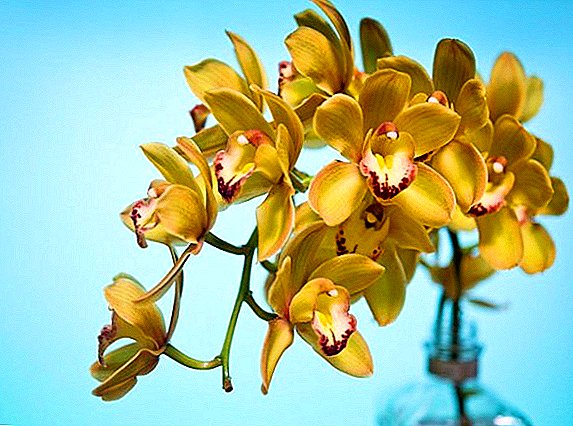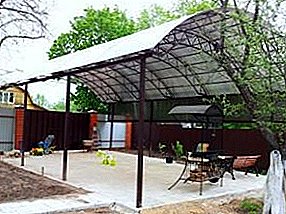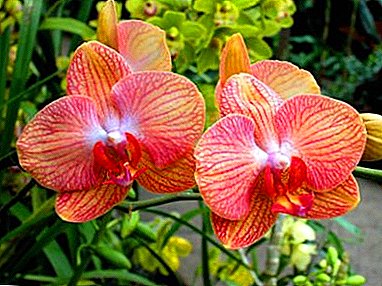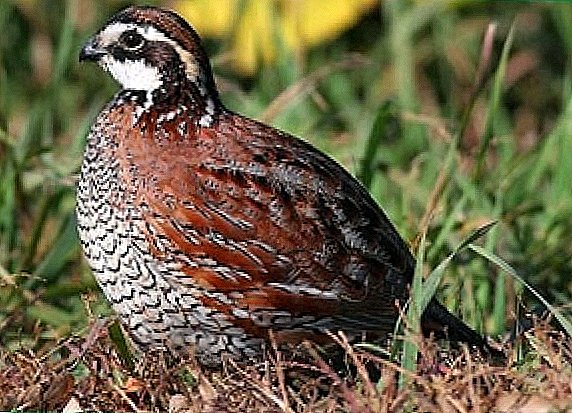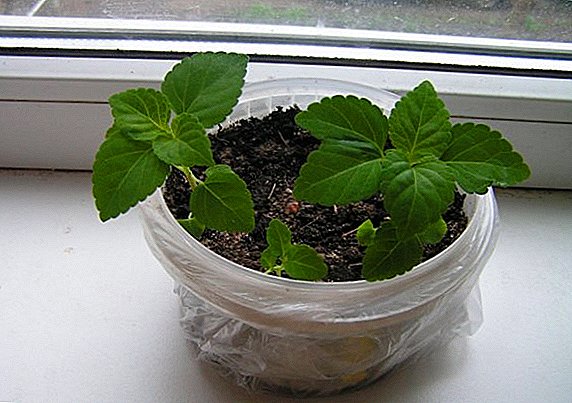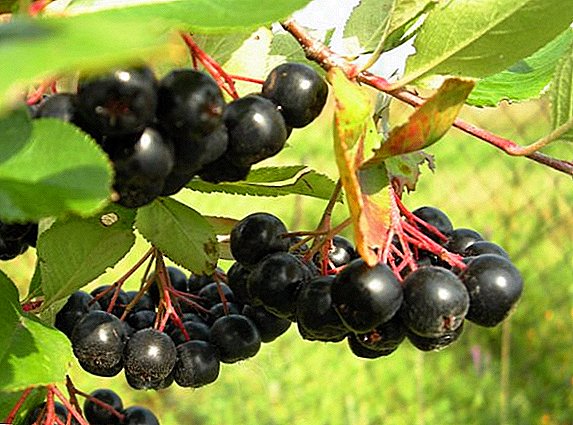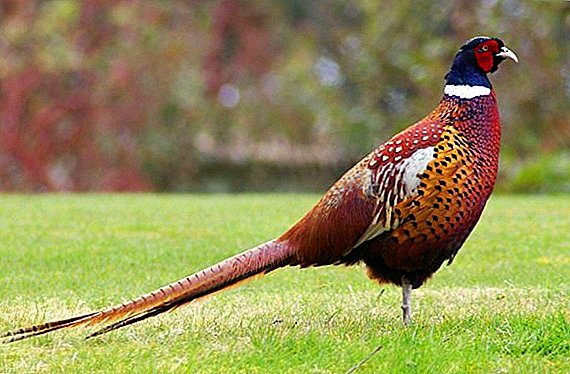 A pheasant is a bird that is rather poorly adapted to be kept in a home farm, which, nevertheless, does not prevent many farmers from successfully breeding it. Particularly difficult for beginner poultry farmers, as a rule, is the preparation of a competent diet for these birds. This article is designed to help you figure out what pheasants eat, how to properly formulate a diet for birds of different ages, and also to establish a variety of seasonal differences in the menu for pheasants.
A pheasant is a bird that is rather poorly adapted to be kept in a home farm, which, nevertheless, does not prevent many farmers from successfully breeding it. Particularly difficult for beginner poultry farmers, as a rule, is the preparation of a competent diet for these birds. This article is designed to help you figure out what pheasants eat, how to properly formulate a diet for birds of different ages, and also to establish a variety of seasonal differences in the menu for pheasants.
How and how to feed pheasants at home
The first thing that any poultry farmer who wants to start breeding pheasants needs to know is that for harmonious development and adequate weight gain these birds need to eat several different feeds at once.  Among them emit green, cereal and animal feed. Special attention should be paid to the fact that the diet and the frequency of meals are different for adults and chicks. Below you will find a rough description of the feeding process of pheasants.
Among them emit green, cereal and animal feed. Special attention should be paid to the fact that the diet and the frequency of meals are different for adults and chicks. Below you will find a rough description of the feeding process of pheasants.
Did you know? For male pheasants characterized by the issuance of various sounds, as a rule, two-syllable. Females, on the contrary, almost never scream.
Adults
The menu of adult birds should be quite diverse, but at the same time, the introduction of new components into the diet should take place gradually so as not to injure their delicate digestive system. It is recommended to make at least three feedings per day, one of which must be completely composed of wet food (usually green), and the other two may include a variety of feed or mash food at your discretion.
Drinking bowls and feeders should be of sufficient size so that each of the birds at the time of the meal could find a place near them. It must also be remembered that the quantity of feed must be calculated in such a way that at the end of feeding the feeders are completely empty. On average, an adult pheasant should consume at least 70 g of feed per day.  Pheasant Feeder
Pheasant Feeder
Here is a sample list of products recommended for use by these birds:
- barley;
- oats;
- wheat;
- corn;
- legumes;
- carrot;
- cabbage;
- boiled potatoes;
- pumpkin;
- fresh grass.
Did you know? In the wild, pheasants prefer to live in one constant pair, while in captivity they lose this feature.
Chicks
Start feeding the chicks from the very first day of their life. Before you start the first feeding, you need to pre-feed each chick with a small amount of warm boiled water - this is done in order to prevent sticking of feed on the walls of the still young and tender intestines of the chicks. Babies require frequent feedings, the optimal schedule in the first two weeks of their lives is 1 feeding every two hours.  It is also important to note that the chicks initially do not know how to drink or eat, therefore, in the beginning they will have to be trained in this process. This is done as follows: after you have poured the food into the tank, you need to tap on it with your finger, attracting the attention of the chicks, and after they approach the feeding trough, it is necessary to slightly bend the head of each of them to the food.
It is also important to note that the chicks initially do not know how to drink or eat, therefore, in the beginning they will have to be trained in this process. This is done as follows: after you have poured the food into the tank, you need to tap on it with your finger, attracting the attention of the chicks, and after they approach the feeding trough, it is necessary to slightly bend the head of each of them to the food.
Similarly, do with drinking. Until the chick reaches one month of age, its diet should mainly consist of finely chopped greens mixed with any animal protein, for example, a boiled egg or small insects (meal worms). As an alternative to animal feedings, you can replace the water for chicks with yogurt.
Important! The amount of green food throughout all stages of maturing chicks should remain approximately the same (at least 30-40%).
Once the chicks have reached the age of one month, it is necessary to gradually introduce compound feed into their ration with which you feed your adults. Obligatory component of any feed for young stock in the period up to two months are protein-rich vegetable components, for example, corn, beans, peas, millet, etc. This need is dictated by a very fast growth rate of chicks in this period.
Seasonal differences in feeding
When starting to breed pheasants, any farmer should bear in mind the fact that these birds should receive some excellent food in the summer and winter periods. In addition, during the cold season, these birds molt, which specifically affects their bodies and increases the need for a variety of minerals. Below you will find recommendations for creating a menu for pheasants at different times of the year. 
Summer
In the summer time, first of all, you need to take care of a sufficient amount of green fodder in the diet of your birds. This need is dictated by the characteristics of the physiological processes occurring in the body of birds at this time. As mentioned earlier, the total amount of feed consumed by adult pheasants per day should not be less than 70 g, while at the same time green foods should be no less than 20 g in summer.
If your walking yard has sufficient size and fresh grass is growing on it, then you should also take into account the fact that some part of the green fodder birds will receive, pecking it. In summer pheasants are recommended to feed at least three times a day. Feeding is necessary to try to produce at the same time so that the birds develop a food instinct.  As for the fortified and animal supplements, their amount in the summer diet is slightly less than in the winter, and is respectively 5 and 9 g for each bird. In general, it should be noted that feeding pheasants in the summer is a fairly simple exercise, which does not require special skills and knowledge.
As for the fortified and animal supplements, their amount in the summer diet is slightly less than in the winter, and is respectively 5 and 9 g for each bird. In general, it should be noted that feeding pheasants in the summer is a fairly simple exercise, which does not require special skills and knowledge.
In winter
Winter feeding should be more frequent than summer. It is recommended to feed the birds every 6-7 hours. It should be borne in mind that in the diet of your birds, by the beginning of winter, the amount of green fodder should gradually decrease, to about 7-10 g per bird. The total amount of feed should be, as in the summer, not less than 70 g per individual.
Important! Part of the feed can be replaced by animal protein (fish oil, bone meal, minced meat, cottage cheese) - this will help pheasants to transfer shedding easier.
The main part of the feed during this period should be components rich in protein: a variety of grains (wheat, millet, etc.), corn, legumes. In addition, to facilitate the process of molting, which takes place just in the winter, it is recommended to add a sufficient amount of mineral components (within 7-10 g per bird) in the form of shells, chalk, limestone, etc.  Vitamin supplements in winter are very important, because it was during this period that bird organisms were especially weakened by natural physiological processes and the unfavorable temperature environment for them. As an additive, it is best to use a drug called "Trivitamin". It is added to food or drink for birds at the rate of 1 drop per three individuals.
Vitamin supplements in winter are very important, because it was during this period that bird organisms were especially weakened by natural physiological processes and the unfavorable temperature environment for them. As an additive, it is best to use a drug called "Trivitamin". It is added to food or drink for birds at the rate of 1 drop per three individuals.
What can not feed
The digestive system of pheasants is quite vulnerable and does not accept every product that is suitable for feed to other birds. Here is a sample list of products that can harm these birds when they are eaten:
- green potatoes and peeling of it;
- any fried foods;
- various large seeds (sunflower, pumpkin, etc.);
- black bread;
- over salty foods;
- too wet mash;
- millet.

How to water
As mentioned earlier, small pheasants must first be taught to drink water, dipping their beaks in a container with liquid. In the future, it is necessary to remember another very important rule about the watering of these birds: they flatly refuse to drink warm water, so drinkers for them are recommended to be placed in shaded places. In addition, pheasants do not like dirty water, so try to change it after each feeding.
Learn how to breed pheasants at home, what breed to choose and how to catch a pheasant with your own hands.
We hope that this article has helped you find answers to all your questions regarding the feeding of pheasants. Love and attention in relation to your pets, as well as careful adherence to all the rules on the content of these birds, will surely lead to the fact that breeding pheasants will bring you the expected benefits.


